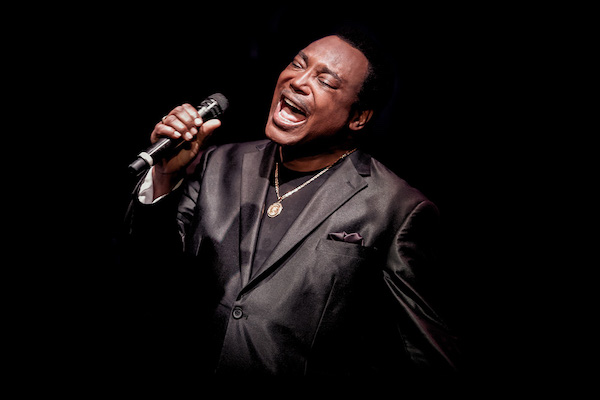Oct 28, 2025 10:47 AM
In Memoriam: Jack DeJohnette, 1942–2025
Jack DeJohnette, a bold and resourceful drummer and NEA Jazz Master who forged a unique vocabulary on the kit over his…

George Benson’s latest album was recorded live at Ronnie Scott’s in London.
(Photo: Carl Hyde)He also demonstrates his guitar skills. Brilliant fills and flourishes populate “In Your Eyes” and “Love Ballad.” High-octane octaves turn up the heat in a vamp that closes “Give Me The Night,” while a rubato opening cools things down on the instrumental “Affirmation” (from Breezin’). On “The Ghetto,” Donny Hathaway’s 1970 manifesto of social relevance, Benson invokes language of the period that excited Scofield back in the day.
Providing the settings is music director and keyboardist Randy Waldman, whose airtight arrangements are executed by Stanley Banks (bass), Thom Hall (keyboards), Michael O’Neill (guitar and vocals), Khari Parker (drums) and Lilliana de los Reyes (percussion and vocals).
Banks, who has played with Benson since 1975, said the guitarist was, within limits, flexible when it came to his demands on band members: “He’s going to give you all the room you need, except when he needs to hear a certain thing. More than anything else, he’ll ask you for conviction.”
Beyond asking for conviction, Benson professed a generally laissez-faire attitude toward the band, preferring to allow their creative juices to flow unimpeded. He asserted, for example, that he had little input into O’Neill and de los Reyes’ onstage use of digital tools that add layers to their vocals.
“I don’t mess with them,” Benson said, “because I like to hear something slightly different. It gives me ideas, so I leave them alone.”
“He’s super loose,” said Waldman, who has been with Benson on and off since the 1980s and backed other singers. “He’s one of the only artists I’ve ever worked with where, as you’re walking onstage, you simply have no idea of the first song you’re going to play. He’s so in the moment. We just know that at a place like [Ronnie Scott’s], we’re probably going to lean more toward jazz.”
Sometimes a venue’s audience can confound expectations. That, Waldman said, is what happened one year at the Montreux Jazz Festival: “We started with ‘Take Five’ or something. The audience started screaming for [Benson’s 1978 pop hit] ‘On Broadway.’”
Knowing whether to lean toward the jazz side or the pop side, Waldman said, had been a career issue for Benson: “It’s almost a problem—he’s too good at playing guitar and singing. When you say the name George Benson, a lot of people think of him either as a pop singer or a great jazz guitar player or a smooth-jazz artist. Most people can’t get a handle on that.”
Banks recalled the opprobrium some critics directed at Benson for supposedly abandoning his jazz roots after “This Masquerade” hit the charts, and he was suddenly fighting off fans and jumping into limousines.

Jack DeJohnette boasted a musical resume that was as long as it was fearsome.
Oct 28, 2025 10:47 AM
Jack DeJohnette, a bold and resourceful drummer and NEA Jazz Master who forged a unique vocabulary on the kit over his…

D’Angelo achieved commercial and critical success experimenting with a fusion of jazz, funk, soul, R&B and hip-hop.
Oct 14, 2025 1:47 PM
D’Angelo, a Grammy-winning R&B and neo-soul singer, guitarist and pianist who exerted a profound influence on 21st…

To see the complete list of nominations for the 2026 Grammy Awards, go to grammy.com.
Nov 11, 2025 12:35 PM
The nominations for the 2026 Grammy Awards are in, with plenty to smile about for the worlds of jazz, blues and beyond.…

Drummond was cherished by generations of mainstream jazz listeners and bandleaders for his authoritative tonal presence, a defining quality of his style most apparent when he played his instrument unamplified.
Nov 4, 2025 11:39 AM
Ray Drummond, a first-call bassist who appeared on hundreds of albums as a sideman for some of the top names in jazz…

Jim McNeely’s singular body of work had a profound and lasting influence on many of today’s top jazz composers in the U.S. and in Europe.
Oct 7, 2025 3:40 PM
Pianist Jim McNeely, one of the most distinguished large ensemble jazz composers of his generation, died Sept. 26 at…





